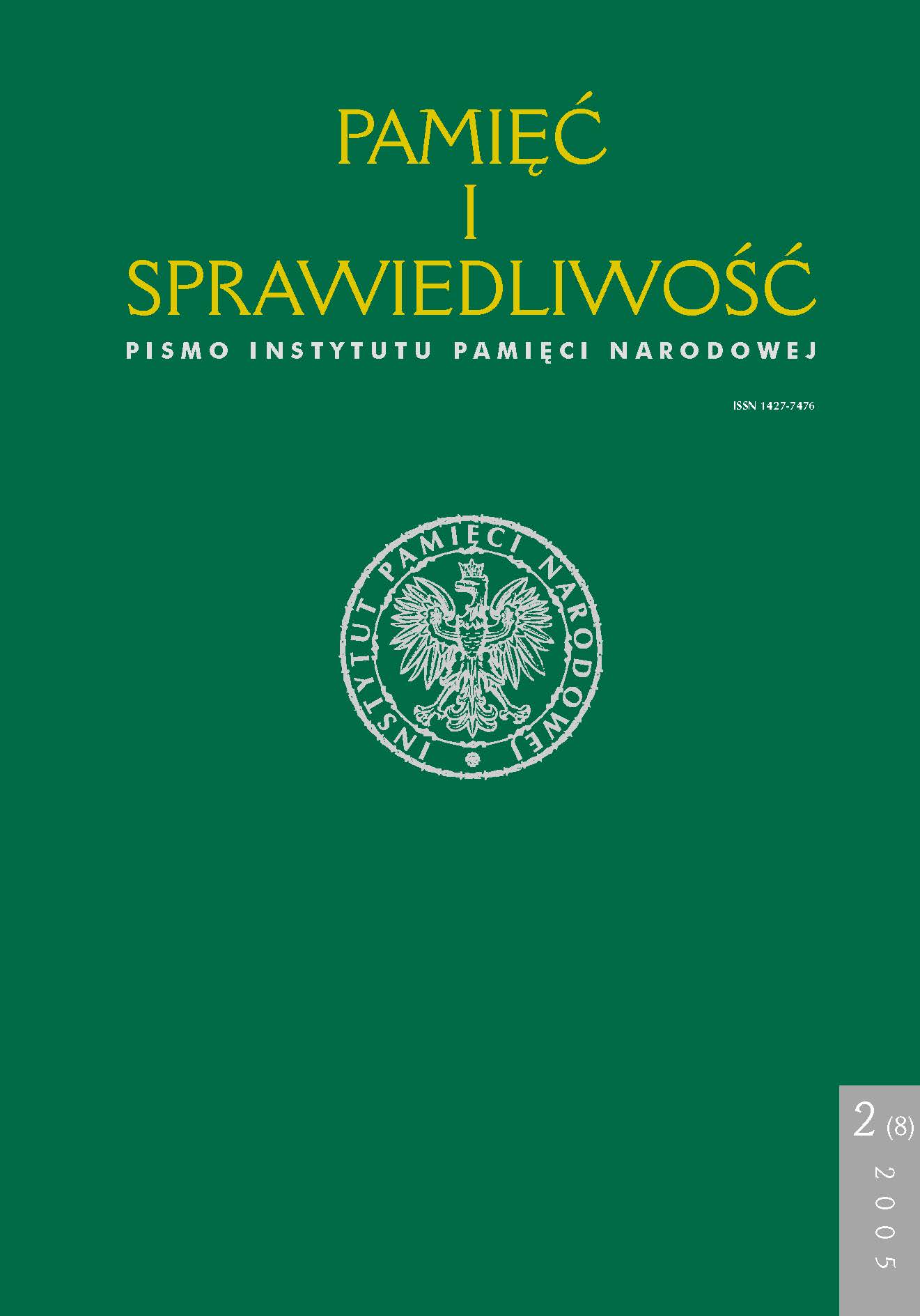Operation “Pożar.” Exposition and elimination of Jozef Franczak “Lalus,” “Lalek” – the last soldier of the Polish resistance (1956–1963)
Remembrance and Justice, Vol. 8 No. 2 (2005), pages: 347-376
Publication date: 2005-12-30
Abstract
The death of Jozef Franczak represents the end of the underground fight for the Polish independence. Before the war he was a non-commissioned officer. Then he fought in the war of 1939. On escaping from Soviet captivity at the end of 1939 he started a conspiracy and continued it for the next 24 years. Under the German occupation he was a commander of a secret squad and after the “liberation” a commander of patrol in the division
of Capt. Zdzislaw “Uskok” Bronski. After 1953 he went into hiding, supported by his collaborators. The Communist Secret Service estimated the number of people who helped him at over 200. He hid in villages near Piaski town, 30 kilometers southeast of Lublin. The article reveals facts from the last period of his hiding and the SB methods which were supposed to lead to his apprehension (or elimination). His nearest family and people suspected of helping him came under careful scrutiny. It is worth noting that listening devices were installed at homes of his sisters and friends. Moreover, in the buildings of the SB
collaborators who lived near to the households of the suspected people there were located so-called points of undercover observation. More than once, two or three SB officers with the aid of a secret collaborator kept them under surveillance for as long as a month.
One of the main methods employed by SB officers, who wanted to track Franczak down, was recruiting people who lived in the area as common informers. Their task was to ask around about his hide-outs and watch the members of the closest family and other
people who were involved. It is estimated that at the time, the SB enlisted more than a hundred people who yielded to blackmail, expected material gains or were guided by patriotic motives. Thanks to the systematic operational research, in January of 1963 the right candidate for a secret agent was selected. He was a close relative of Franczak’s fiancée. He lived in Lublin but following SB orders he started visiting his hometown and collected information about the fugitive and his helpers. Having the confidence of Franczak’s family he was put in touch with “Lalek” in August of 1963. From that moment on SB started an operational “game,” which succeeded thanks to information provided by the secret collaborator. On the 21st of October 1963 Jozef Franczak was surrounded and shot down by an operational group of SB-ZOMO officers.
Most read articles by the same author(s)
- Sławomir Poleszak, Antykomunistyczne podziemie zbrojne w Łomżyńskiem i Grajewskiem w latach 1945–1957 , Remembrance and Justice: Vol. 2 No. 2 (2002)
- Sławomir Poleszak, Anna Grażyna Kister, [Recenzja] Anna Grażyna Kister, Studium zniewolenia. Walka aparatu bezpieczeństwa z polskim zbrojnym podziemiem niepodległościowym na Lubelszczyźnie (1944–1947), Wydawnictwo Arcana, Kraków 2005, ss. 258 + 55 nlb. , Remembrance and Justice: Vol. 8 No. 2 (2005)
- Sławomir Poleszak, O potrzebie kulturalnej dyskusji. W odpowiedzi Annie Grażynie Kister , Remembrance and Justice: Vol. 10 No. 2 (2006)
- Sławomir Poleszak, Piotr Łapiński, Posłańcy Śmierci. Kombinacje operacyjne aparatu bezpieczeństwa na Białostocczyńnie 1949–1950 , Remembrance and Justice: Vol. 3 No. 1 (2003)
 Język Polski
Język Polski
 English
English
 Deutsch
Deutsch
 Français (France)
Français (France)
 Italiano
Italiano
 Русский
Русский


 PDF (Język Polski)
PDF (Język Polski)
